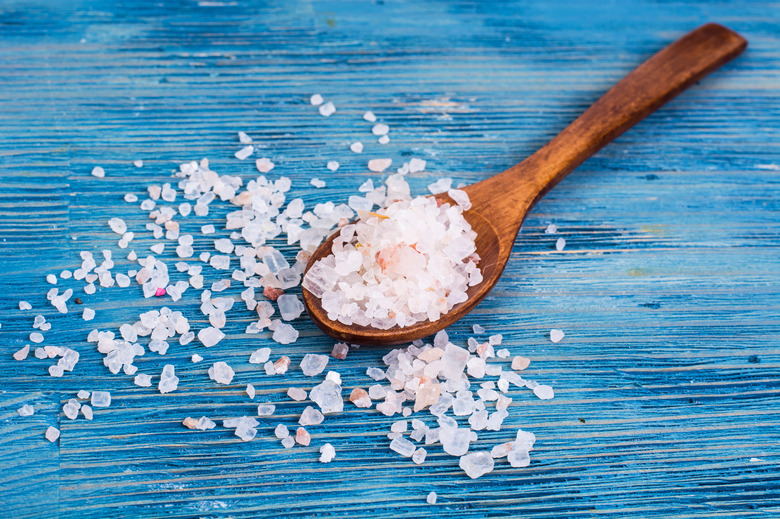How Much Water Is Needed To Dissolve Salt?
At room temperature, you need at least 100 grams of water to dissolve around 35 grams of salt; however, if the temperature changes, the amount of salt that water can dissolve also changes. The point where water can no longer dissolve salt is called saturation, and this happens when the salt you add only goes to the bottom of the solution. There are also several factors that facilitate salt's solubility in water.
TL;DR (Too Long; Didn't Read)
In general, you can dissolve 35 grams of salt in 100 mL of water. However, increasing the temperature can help you dissolve more.
Temperature Increase
Temperature Increase
Most substances diffuse in water at direct proportion to temperature increase. Some elements also readily dissolve in water with the slightest temperature increase, like salt potassium nitrate. The solubility of sodium chloride or table salt is only slightly affected by temperature increase. Aside from this, salt also increases the temperature at which water boils. With 100 grams of almost-boiling water (around 200 to 212 degrees F), you can add around 40 grams of salt before it becomes saturated.
Temperature Decrease
Temperature Decrease
Salt dissolves faster in hot water than in cold water. Conversely to heating, salt lowers the temperature at which water freezes. Adding salt as the solute to water (solvent) at water's freezing temperature disrupts the equilibrium of water. Salt molecules compete with and displace the water molecules, but will repel ice that is formed at this juncture. The salt increases the melting point of water, meaning salt slows down ice melting. Adding more salt will create a significantly lower melting and freezing point for water.
Saturated vs. Unsaturated Salt Solution
Saturated vs. Unsaturated Salt Solution
In an unsaturated salt solution, the solute molecules (salt) become hydrated by the solvent (water), thus decreasing the size of the salt crystals and eventually dissolving the salt. In a saturated solution, a point of equilibrium is reached where the crystal particles either keep getting dissipated or stick to the crystal, forming smaller sized crystals in water. In room temperature, the saturation point is reached when the water is no longer able to take in any salt molecules, thereby forming two separate layers of solute (salt) and solvent (water). At a number of degrees below the freezing point of water, about -5.98 degrees F, water can no longer hold any more salt molecules. At this point, a mixture of solid ice and crystal salt is observed.
Salt Type
Salt Type
One factor to consider when studying salt solubility in water is the kind of salt used. For example, rock salt diffuses less readily than table salt or canner's salt. This is because rock salt has more impurities, which take more time for water molecules to break up.
References
Cite This Article
MLA
Andrews, Natalie. "How Much Water Is Needed To Dissolve Salt?" sciencing.com, https://www.sciencing.com/much-water-needed-dissolve-salt-8755948/. 26 April 2018.
APA
Andrews, Natalie. (2018, April 26). How Much Water Is Needed To Dissolve Salt?. sciencing.com. Retrieved from https://www.sciencing.com/much-water-needed-dissolve-salt-8755948/
Chicago
Andrews, Natalie. How Much Water Is Needed To Dissolve Salt? last modified March 24, 2022. https://www.sciencing.com/much-water-needed-dissolve-salt-8755948/
